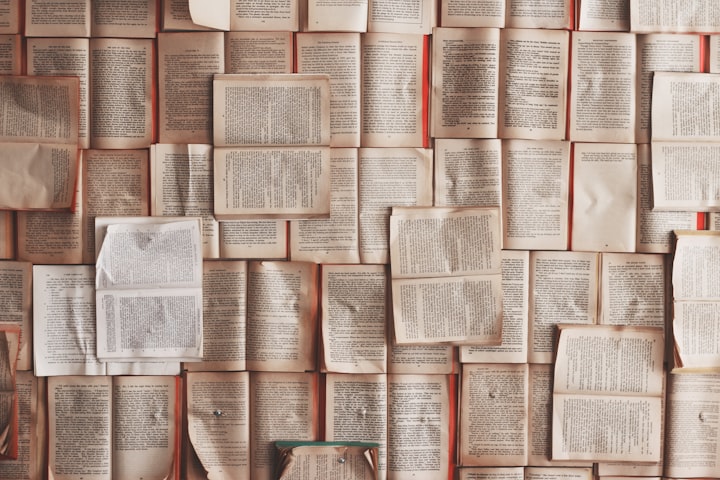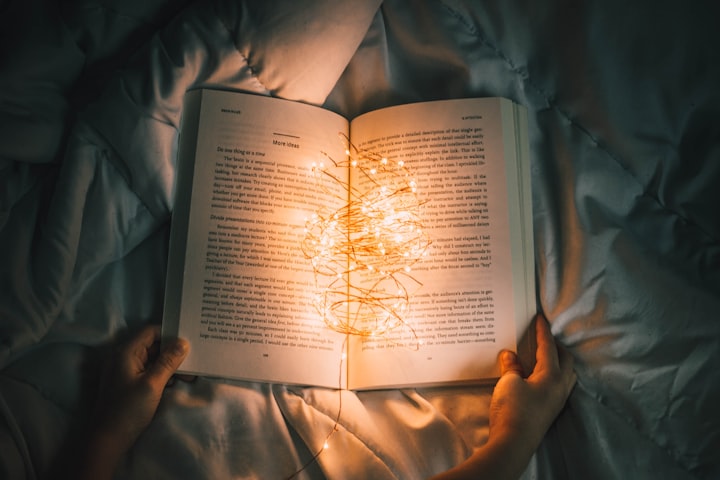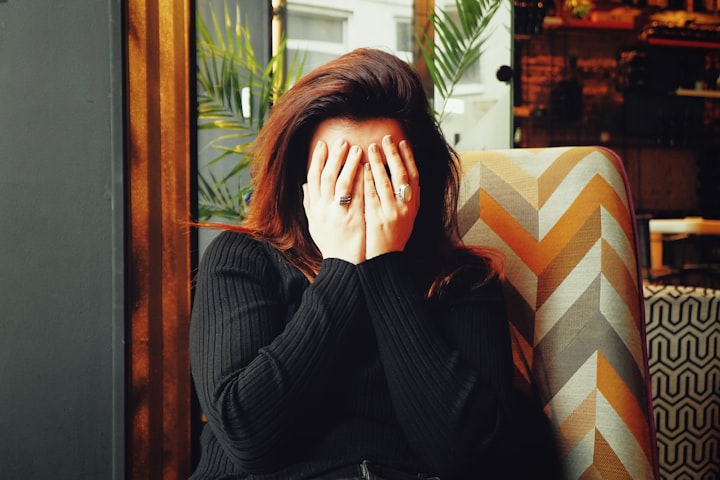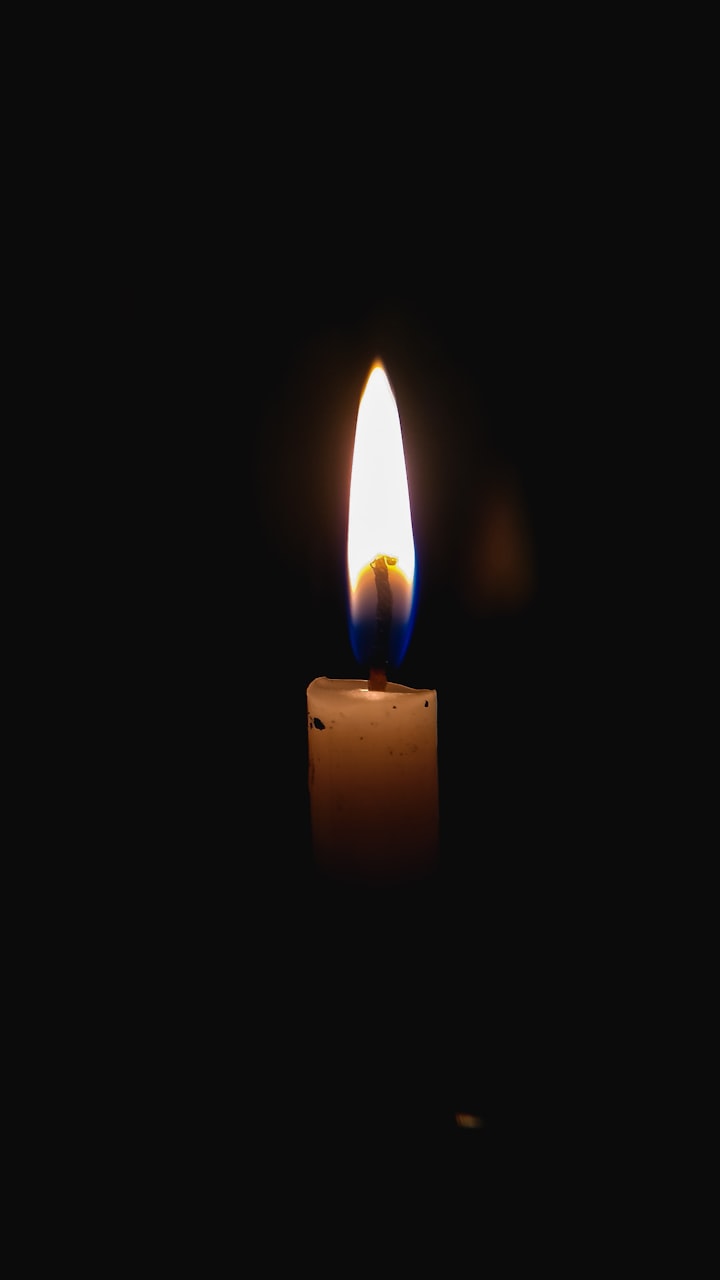Everything You Need To Know To Become An Active Reader
Engage With Your Books For a Richer Experience
I've always been an avid reader. But for several years, my big mistake was also being a passive one. Many great ideas, quotes, and creative nuggets of understanding slipped through my fingers because I moved too quickly (and passively) through the pages.
That all changed a decade ago with a book club that I joined. The group's leader became my reading mentor. She's the one who taught me the value of active reading and how to properly do it.
This technique that I'll share with you now has made all the difference in my life as a bookworm and writer. I think it will do the same for you.
What Is Active Reading?
Before we dig into the details of how to become an active reader, let's talk about what it means.
When you're actively reading, you're engaged and interacting with the book's text. My favorite explanation of this technique comes from an unknown author who says:
"Passive readers read words, but active readers read ideas. Passive readers read without thinking - their minds wander, and they cannot remember what they have read. Active readers think critically about the author's ideas. They are more likely to maintain concentration and remember what they have read."
I certainly retain more information as an active reader. The ideas form a clearer picture in my mind. But there's also a level of conceptual understanding that's heightened by actively engaging with my books. I make more robust associations with existing knowledge. I can compare the author's words with other ideas in a fuller, more comprehensive way. Finally, I find it easier to share and discuss information with others, enriching my relationships with other readers.
There are also all the ways actively reading has improved my skill as a writer. Over the years, I've amassed a bountiful collection of quotes - glimmering pieces of wisdom, humor, and inspiration that I use to enrich my own work. My book notes have also captured hundreds of topics and ideas for me to research and expand upon.
It all sounds rather marvelous, doesn't it? But where do you start? Well, I believe it begins with the right tools.
The Active Reader's Toolbox
The most challenging part of designing your own active reading process is determining your technique. Bill Gates, for example, makes all his notes in the margins of hard copy books. He doesn't read eBooks. Ryan Holiday, a favorite blogger and author of mine, uses an index card system. As he puts it, "Writing…by hand forces me to take my time and to go over everything again (taking notes on a Kindle is too easy, and that's the problem)."
He makes a critical point - this process shouldn't be too easy. The whole point of becoming an active reader is to slow down and put more effort and thought into the words on the page.
The Book
This brings us to a fundamental question: Which is better - a hard copy or digital book? I love my hard copy books. I have bookcases packed with them all over my house. In fact, it wouldn't feel like a home to me if it wasn't filled with books.
As someone who spends most of my workday in front of a tablet or laptop, I enjoy the break a hard copy book gives me from the digital world. I find it easier on my eyes. I find it less tempting to end up on social media. I also find that, for some reason, I retain more information from a hard copy format. I suspect this has to do with the digital reading habits I've developed over time. On a screen, I'm more apt to scan a page than to "deep read" each paragraph.
Many of my hard copy books are highlighted throughout, with penciled notes in the margins, just like Bill Gates. The disadvantage is that I'm unwilling to lend those books for fear that I may lose that information for good. A second disadvantage is the lack of search-ability. To find handwritten notes or a highlighted quote, I have to remember what book that information came from and find it on my shelves.
For these reasons, I only purchase hard copy books when they include graphics that will be more impactful on paper (like art books, cookbooks, or scientific texts) or if the book is exceptional and I know I'll want a copy for my home. In all other cases, my preferred book format is an eBook. And if it turns out to be a surprise favorite of mine, I can always pick up a hard copy for my collection.
The Notebook
I started taking reading notes by using composition notebooks - the ones with the black and white speckled covers. My process was an intensively manual one. I'd hand write not only notes and ideas but quotes as well. Over time, as the number of my completed notebooks began to fill my office, I found it difficult to go back and find specific information. Having to remember which notebook to look in, and then flipping pages searching for what I was looking for turned out to be highly inconvenient. Some people correct for this by keeping a Table of Contents at the beginning of their notebooks. But I was never that organized.
Ultimately, the lack of efficient search-ability drew me away from composition notebooks to a digital one. I've come to appreciate the portability of this option. Wherever I am - home, work, business trip, or vacation - my entire catalog of book reading notes is with me on multiple devices.
My digital notebook of choice is Evernote. I've used this platform for years. That said, there are many other great options. I have friends that rave about OneNote and Apple Notes. The good news is there is a variety to choose from, and some are free. Many also have offline setups, so that you know your content is accessible even when the internet is not.
Despite my digital notebook preference, I do keep a pad of paper handy. My favorite is a small, 5.5" x 8.5" unlined sketchbook. It's my conceptual scratch paper. Sometimes I'll sketch out flow charts of ideas or processes that I'm reading about. I might draw an image or graph out some data. Other times, I'll list topics to research further, or create a to-do list of follow up items related to my reading.
If I want to keep any of that information stored with my digital notes, I simply take a picture and upload it to Evernote.
Index Cards
A few years ago, I stumbled upon a great article by Ryan Holiday about the index card system he uses to organize his reading and ideas.
The Notecard System: The Key For Remembering, Organizing And Using Everything You Read
I tried this method myself and found that it worked significantly better than my composition notebooks. In fact, it's what lead me to determine there were better formats out there than the one I was using.
Following his advice, I organized my index cards by category. That made search functionality highly efficient. I also agreed with his insight that the advantage of index cards is your ability to arrange them into an outline if you're using them for your own writing projects.
However, I don't always write from home. In fact, I do a lot of my writing at the office of my employer or during travel. Additionally, I may be writing about multiple topics in a day, and unexpected projects always come up. Having access to my full catalog of notes no matter where I am turned out to be what I needed most.
This goes back to what I said at the start. A big part of becoming an active reader is trial and error - figuring out what your needs are and modifying your process as you go.
"School Supplies"
The final category for a reading toolbox hearkens back to my favorite thing from my school years - good old-fashioned school supplies. And yes, I have my preferences.
For pencils, I'm a traditionalist. You'll never find me using a mechanical option because I just don't like the feel of them. I'm a Ticonderoga Number 2 pencil girl - the school bus yellow ones, with the green foil-edged erasers.
For pens, Muji is my brand. Specifically, their 0.5 gel ink ballpoint pen in black. It's pretty much the only pen that I use. No bleed-through and I love the way they feel in my hand . The ink is smooth and crisp.
Finally, Zebra Midliner Double-Sided Highlighters are also in my desk drawer. I've found that they rarely bleed through the pages of my hard copy books, they come in great colors, and they're thin enough for even the smallest font size.
Note-Taking Basics
So, you have all your tools and a book to read. Well, now what? In my experience, an active reader captures four forms of information:
- The book description
- Thoughts & questions
- Quotes
- Ideas & topics for further investigation
I always start by noting the basics: book title, author, publisher, publication date, and book summary. I used to hand write all this information. (Boy, was that intensive!) Then when I went digital, I started typing it into my notes. (Getting easier!) Finally, I smartened up and started using the camera on my smartphone. (Genius maneuver) In a few clicks, I've got images of the cover, cover page, and book description, which I store in an online photo album titled "My Books." This works out especially great when friends ask what I'm currently reading. A couple of clicks and information on my latest read is sitting in their email inbox.
Now, before you start taking notes, I recommend that you ask yourself, "What is the purpose of my note-taking?" This is essential because it's going to determine how you take notes and what information you capture.
Conceptual Reading
I've told you that one of the things I sometimes do is create flow charts or graphs to help me work through information I'm digesting from my reading. Conceptual note-taking isn't about capturing the words of a book verbatim. Instead, your goal is to understand the concepts being written about - something new, like a skill or philosophy that you can apply to your life or compare to your existing knowledge.
When I am taking conceptual notes, I'm re-framing the information in a way that makes sense and relates to me directly. Those notes will often contain questions and items to investigate further. I may jot down other sources to read up on later, as well.
Factual Reading
The easiest way to understand factual reading is to consider the purpose of a history book. The author is not trying to discuss a concept or argue their perspective on a theory. They're providing the rich details of a timeline - something that has already happened and of which the facts will not likely change.
When I'm reading a history book, likely a biography, I'm taking factual notes. Most often, in an outline format, although sometimes I may create timelines that condense down the dates of important events into a useful visual summary.
I'm not re-framing the author's content. I'm trying to understand it as written. Similarities to my conceptual notes may include questions to look up later, or other sources to read on related topics. But with factual reading, there's a lot of verbatim notes, and I'm employing a more structured note-taking format.
Creative Reading
My definition of creative reading is time devoted to genres like fiction or poetry. In most of these cases, I'm reading for entertainment or inspiration. As such, my note-taking is much looser. I may fail to take notes on 50% or more of the book. And when I do jot things down, it's more likely to be in the spirit of capturing unique turns of phrase or passages that I found to elicit an emotional response in me. These are my most sentimental notes.

Recently I joined a new book club with the purpose of diving into more esoteric topics. I was drawn to the idea of reading books I'd likely not consider on my own, in the hopes of expanding my horizons. Our current book is Fringe-ology: How I Tried to Explain Away the Unexplainable - And Couldn't by Steve Volk.
If I were to show you my notes, you'd see that already in the first few chapters, I've found a couple of topics for future articles. Besides, I've collected some great quotes like this gem,
"We are always presented with binary choices when the reality is far more complex." - Steven Volk
The experience of my current read reminds me that my books are not only a joy, but also a tool for knowledge, strategy, inspiration, and creativity. Through a decade of active reading, I've gained a more robust experience, better knowledge retention, and source material for my own work.
My advice to you is to stop sitting on the sidelines of your own personal reading. Pick up a pen and a highlighter and capture that magic on the page! I guarantee that it will serve you well for years to come.







Comments
There are no comments for this story
Be the first to respond and start the conversation.